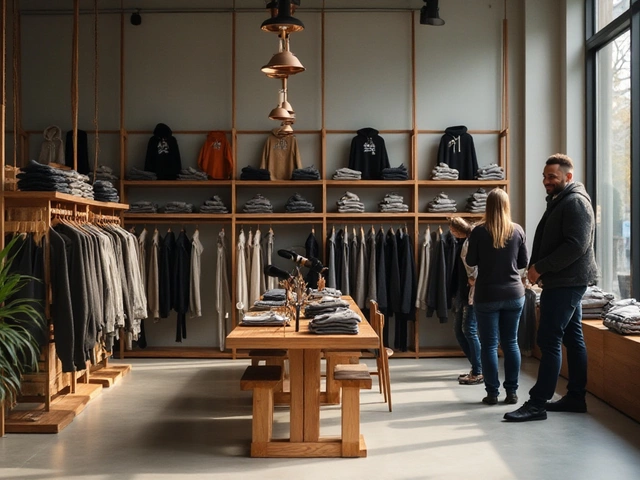Work Shoes: Your Quick Guide to Safety, Comfort, and Longevity
Whether you’re on a construction site, in a kitchen, or stocking shelves, the right shoes can make a huge difference. Bad footwear leads to blisters, slips, and even long‑term injuries. In this guide we’ll walk through what to look for, how to size them right, and simple ways to keep them lasting longer.
What Makes a Good Pair of Work Shoes?
First up, safety. Most jobs that rate work shoes as mandatory will mention a few key features: slip‑resistant soles, steel or composite toe caps, and a sturdy heel. Slip resistance is a must in wet or oily environments – look for a sole pattern that’s rated “ASTM F2913” or “EN ISO 20344.” The toe cap protects against dropped tools or heavy boxes; if you can’t wear steel, composite caps give the same protection without the extra weight.
Comfort matters just as much as safety. A shoe that fits poorly will cause foot fatigue after a few hours. Measure your foot at the end of the day (your feet swell). There should be about a thumb’s width of space between your longest toe and the front of the shoe. The heel should stay snug – no slipping when you walk. Breathable linings (mesh or leather with moisture‑wicking lining) keep feet dry, which reduces blisters.Durability is the third pillar. Look for full‑grain leather or high‑quality synthetic uppers that can handle scuffs. Reinforced stitching around stress points (like the toe and ankle) adds life. If you work in heat, shoes with heat‑resistant midsoles prevent the sole from melting or becoming too soft.
How to Keep Your Work Shoes in Top Shape
Cleaning is easier than you think. After each shift, knock off loose dirt with a brush. For leather, use a damp cloth and a small amount of leather cleaner; for synthetic uppers, a mild soap works fine. Never soak work shoes – excess water can weaken glue and break down the material.
Drying is where most people slip up. Stuff the shoes with newspaper and let them air‑dry at room temperature. Avoid direct heat like radiators or hairdryers; they can warp the toe cap and shrink the leather.
Regular maintenance extends life dramatically. Apply a leather conditioner once a month to keep the material supple. Check the sole for worn-down tread – if the pattern is smooth, it’s time for a new pair or a cobbler’s resole. Tightening loose laces and replacing worn out insoles also helps keep comfort high.
Store your shoes on a rack or in a ventilated shoe bag. If you rotate between two pairs, each pair gets a break, reducing moisture buildup. A simple shoe tree can hold the shape and prevent creases.
Finally, listen to your feet. If you start feeling numbness, hot spots, or a persistent ache, it’s a sign the shoe is no longer doing its job. Swapping to a fresh pair early can prevent bigger problems down the line.
Choosing the right work shoes doesn’t have to be confusing. Focus on safety features, a snug but comfortable fit, and durable materials. Keep them clean, dry, and well‑maintained, and they’ll protect and support you day after day. Now you’re ready to step onto the job site with confidence.
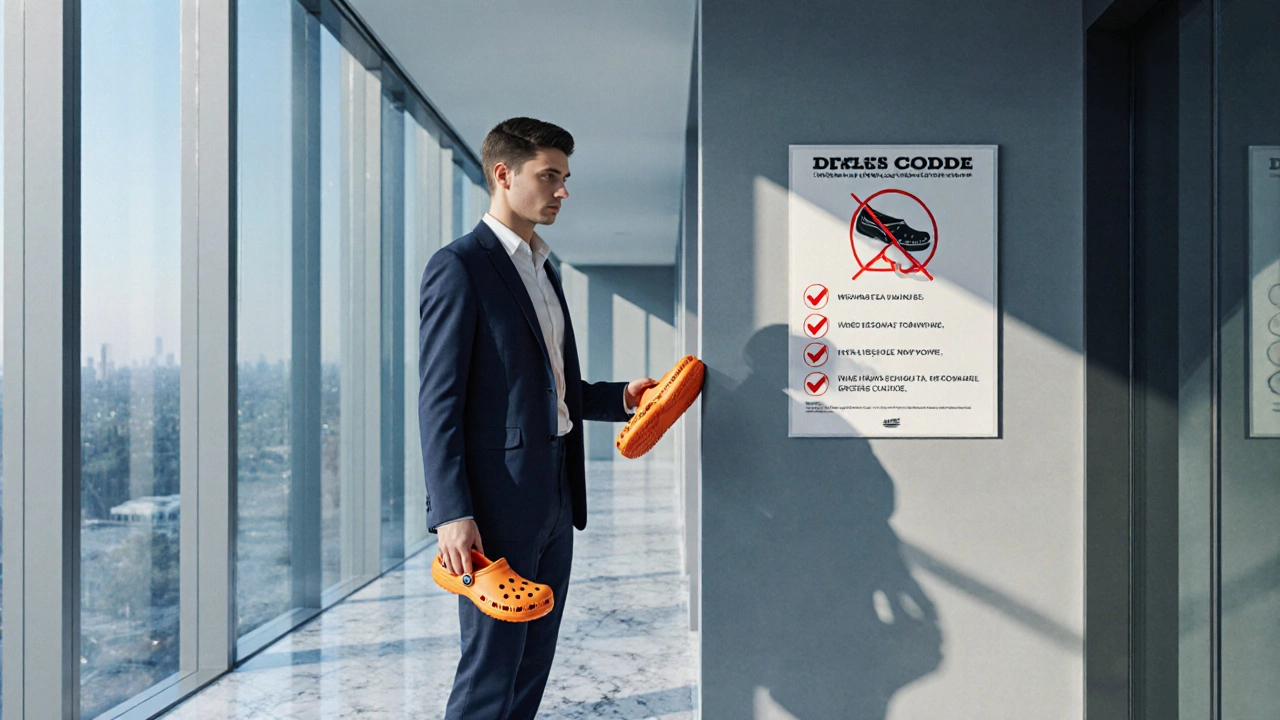
Why Crocs are Banned in Most Offices - The Real Reasons
Discover why Crocs are usually banned in offices, from safety and professional image to company policies, and learn comfortable alternatives that meet dress code rules.

Sneakers at Work: Is It OK and When Does It Work?
Sneakers at work is a hot topic because the line between professional and casual has blurred. This article breaks down when it's fine to wear sneakers to the office, what to look for in work-appropriate styles, and which companies have loosened their dress codes. You'll find easy tips to pull off the sneaker look without raising eyebrows, and a few surprising facts about the rise of sneakers in the workplace. It's all about feeling comfortable while still looking sharp.
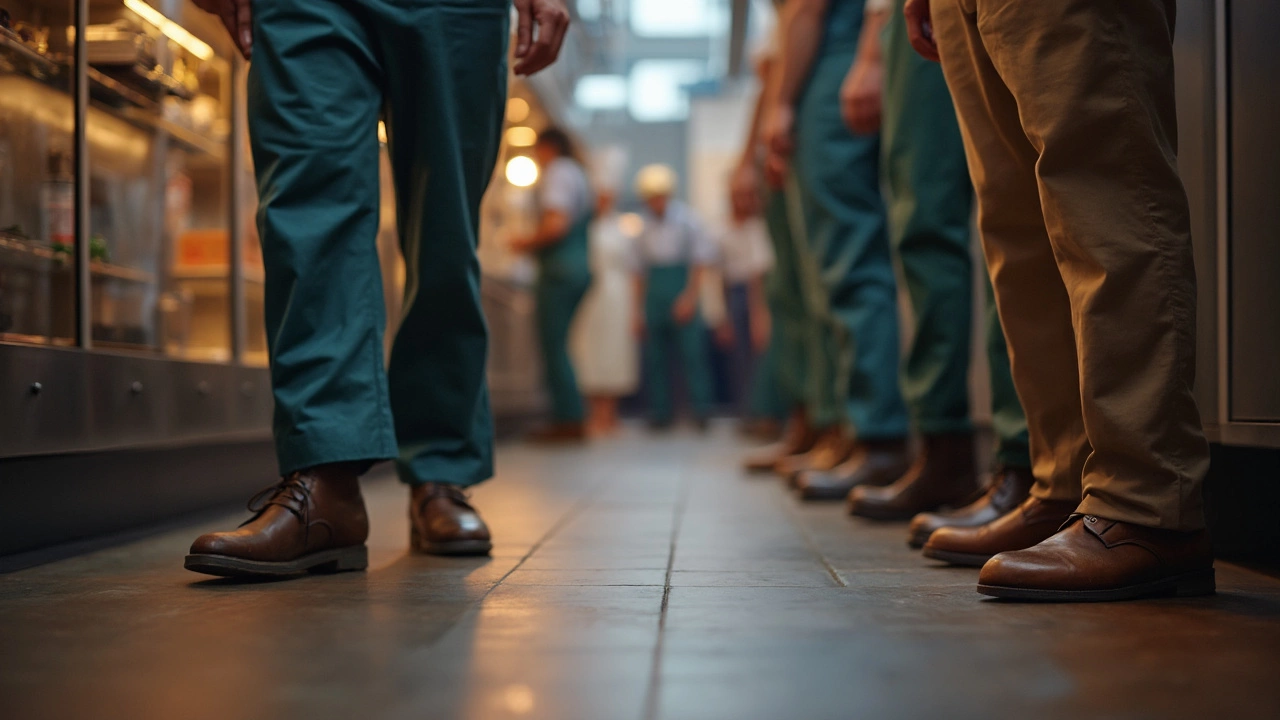
Is Being on Your Feet for 12 Hours Bad? What You Need to Know
Standing for 12 hours straight can put a serious strain on your body, especially if your shoes aren't made for marathon shifts. This article breaks down what really happens to your feet and legs during long workdays, the warning signs of trouble, and how to protect yourself. Get practical tips for picking better work shoes, using simple hacks to handle long hours, and spotting when your job is affecting your health. If you’ve ever limped home after work, this guide has your back.
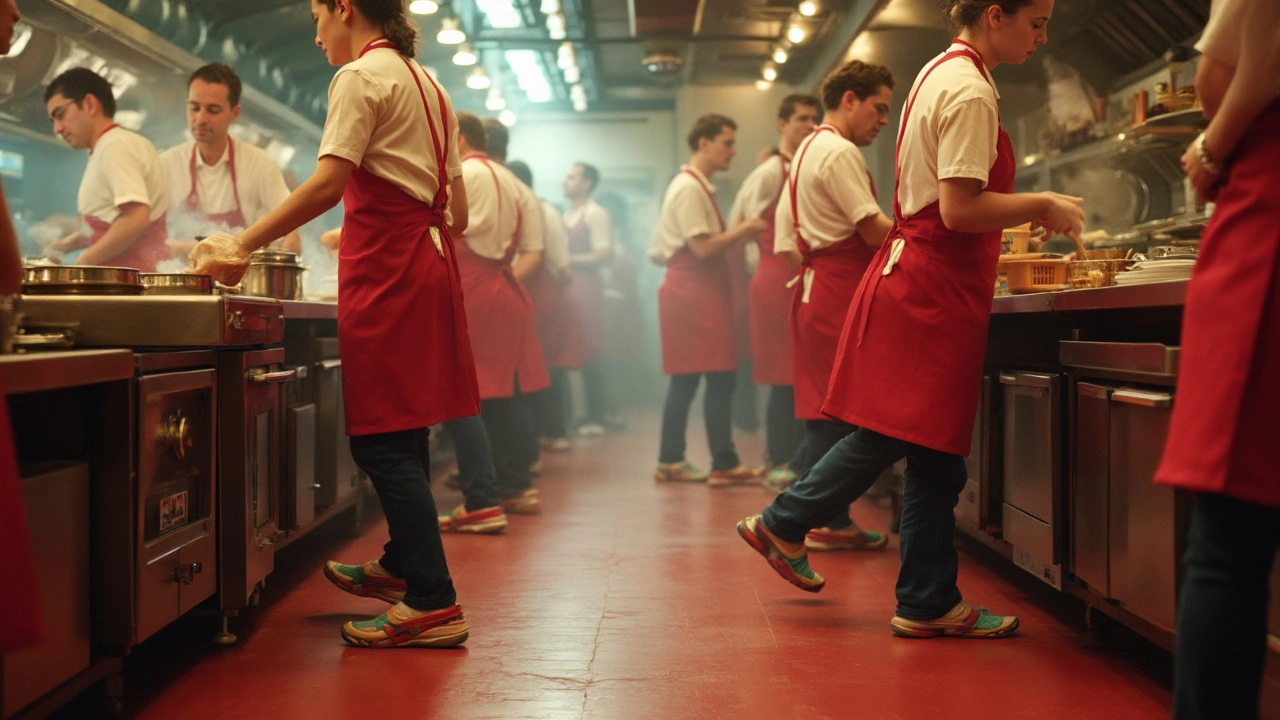
Why Do Restaurant Workers Wear Crocs?
Restaurant workers face long hours on their feet, dealing with spills and fast-paced environments. That's why Crocs are their go-to footwear; they're comfortable, slip-resistant, and easy to clean. With their quirky style and practical design, Crocs have become a staple in kitchens everywhere. Let's break down why these shoes are the top choice for folks in the food industry.
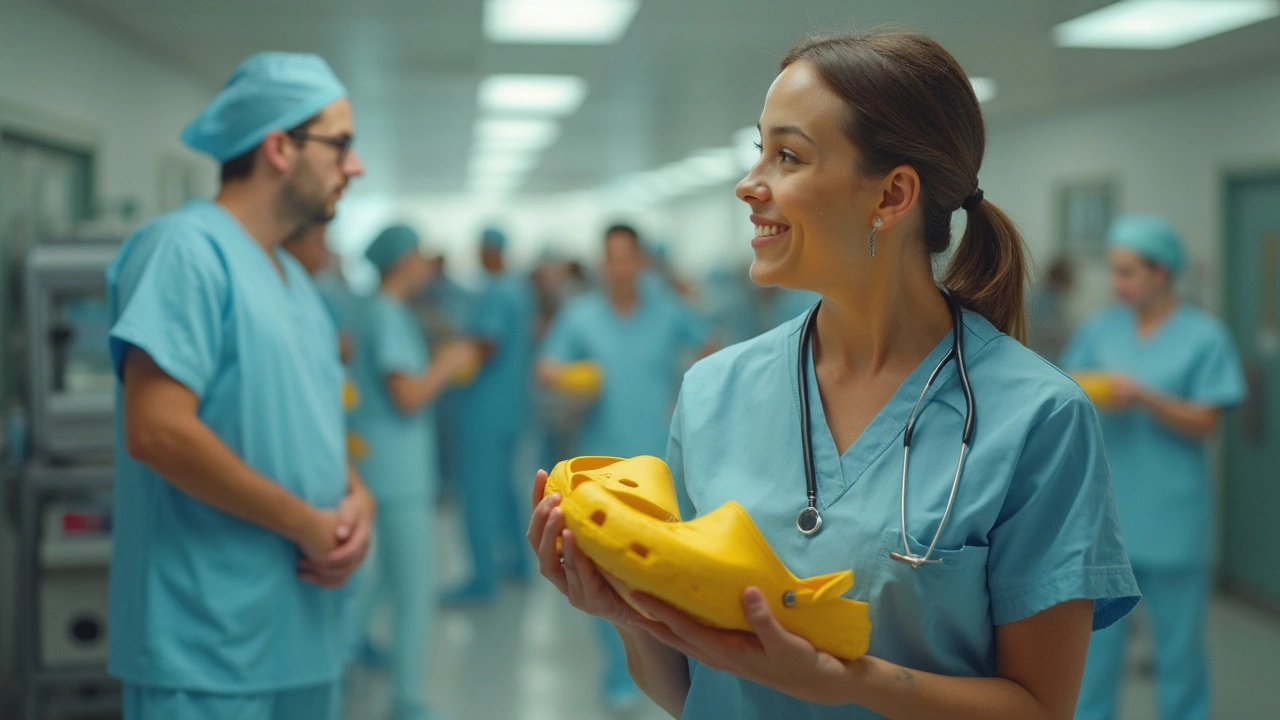
Are Crocs a Health Code Violation in the Workplace?
This article explores whether Crocs, the popular casual footwear, align with workplace health codes. It discusses specific jobs where Crocs might be banned due to safety concerns, addresses common misconceptions, and offers insights into how they fit into occupational dress codes. Practical tips for employers and employees on shoe compliance are included, helping readers make informed decisions based on work environments.
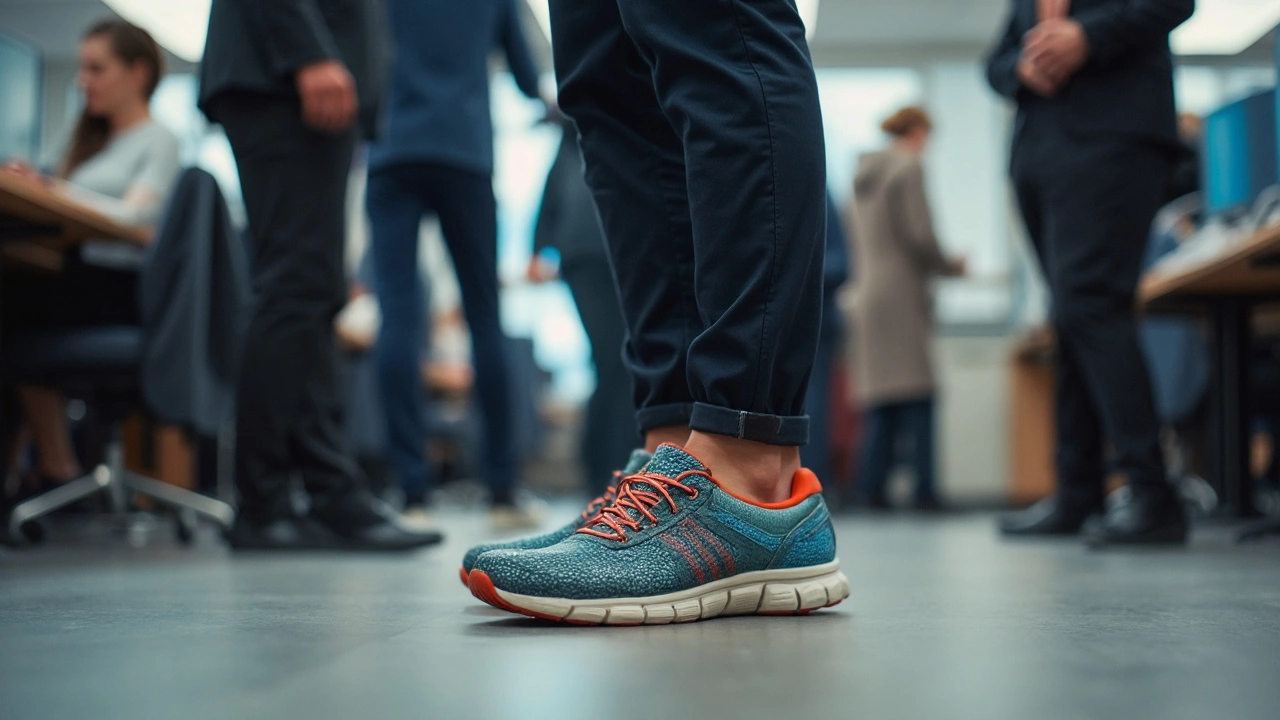
Why Podiatrists Avoid Skechers Shoes for Work
While Skechers are popular for their comfort and style, many podiatrists advise against wearing them for work. This article explores the reasons behind this recommendation, focusing on support, stability, and durability concerns. Learn what to consider when choosing work shoes and discover alternatives that prioritize foot health. Practical tips for finding the right fit might just save your feet from future pain.
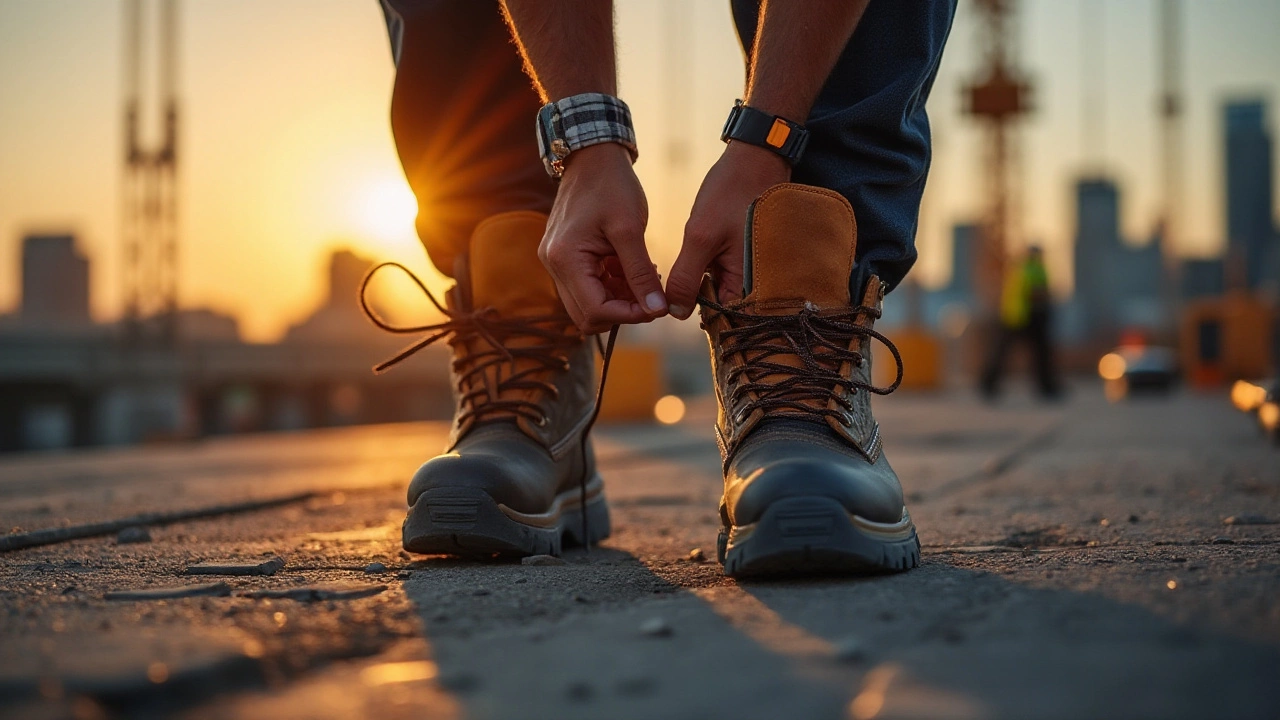
Understanding OSHA Approved Work Footwear for Safety and Comfort
OSHA approved footwear is essential in various workplaces to ensure safety and compliance. These shoes are designed to protect workers from hazards like falling objects, punctures, and electrical risks. It's crucial for employers and employees to understand the requirements and benefits of OSHA compliant footwear. Choosing the right safety shoes can prevent workplace injuries and enhance both safety and comfort on the job. This guide explores what makes footwear OSHA approved and offers practical insights on selecting the right pair for your needs.
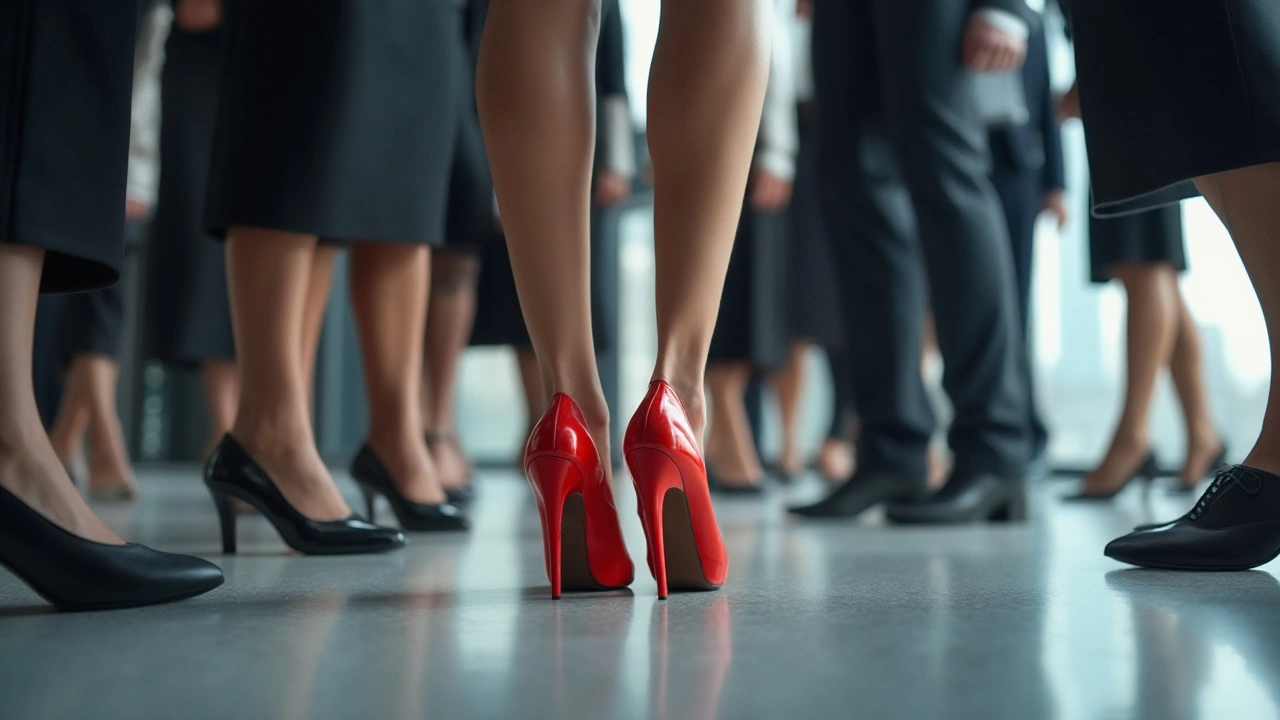
The Guide to Inappropriate Work Shoes and What to Avoid
Navigating the world of work-appropriate footwear can be tricky. Certain shoes might seem stylish or comfortable, yet they breach the boundaries of professional attire. Understanding what makes footwear unsuitable for work environments helps maintain professionalism and respect workplace dress codes. This guide explores common mistakes and offers tips for selecting the right shoes.

